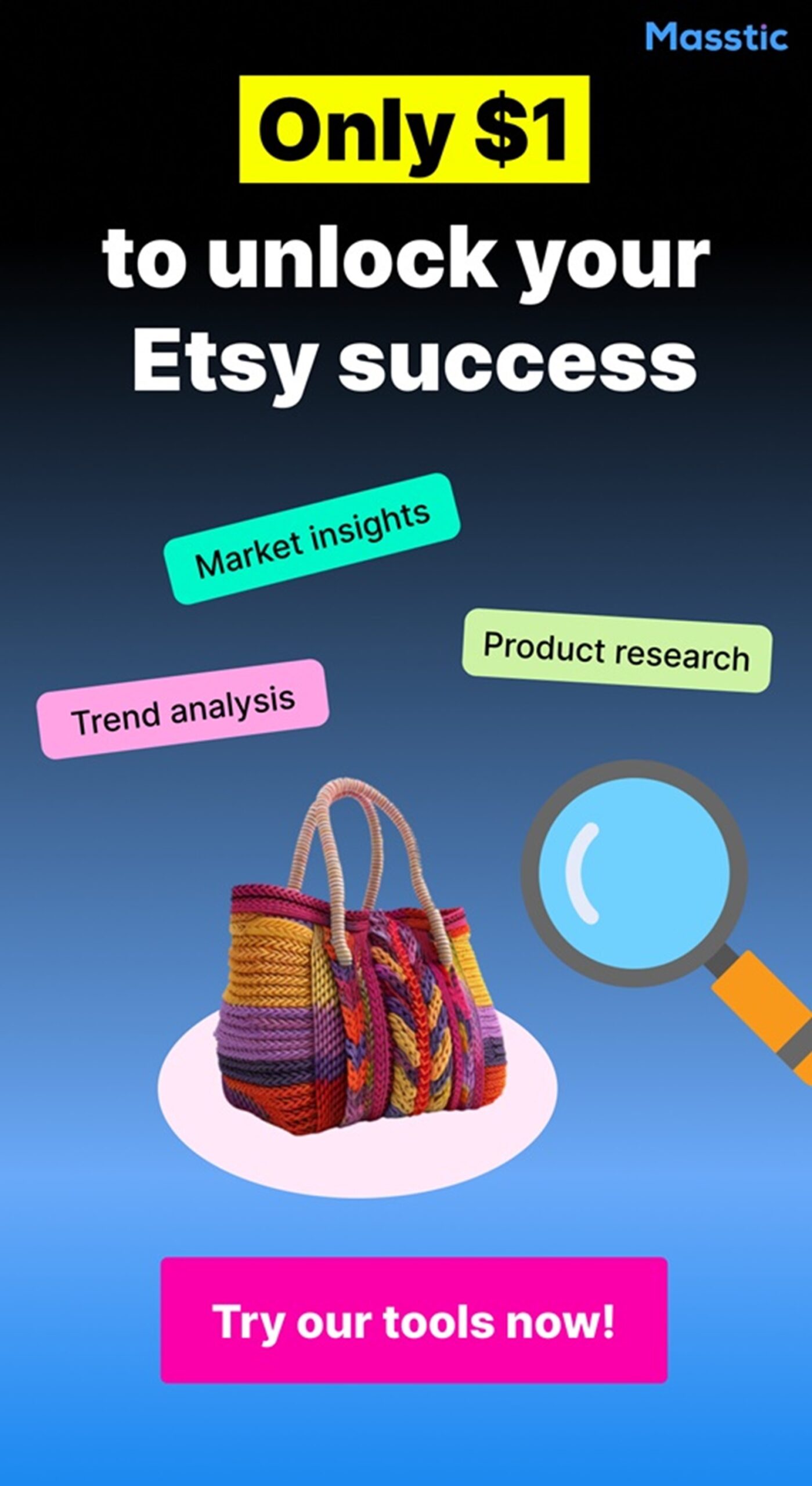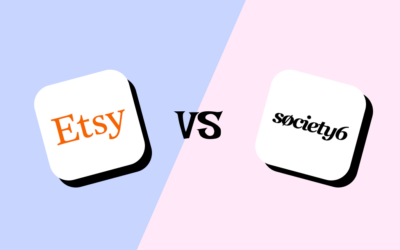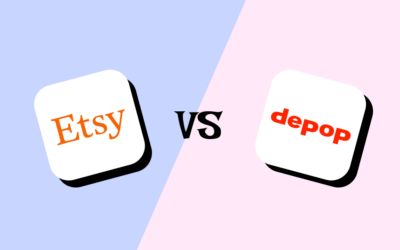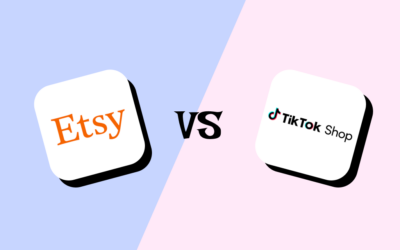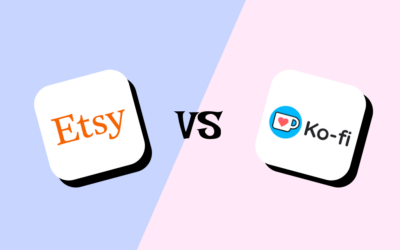Etsy vs Squarespace: A 2024 Head-to-Head Comparison
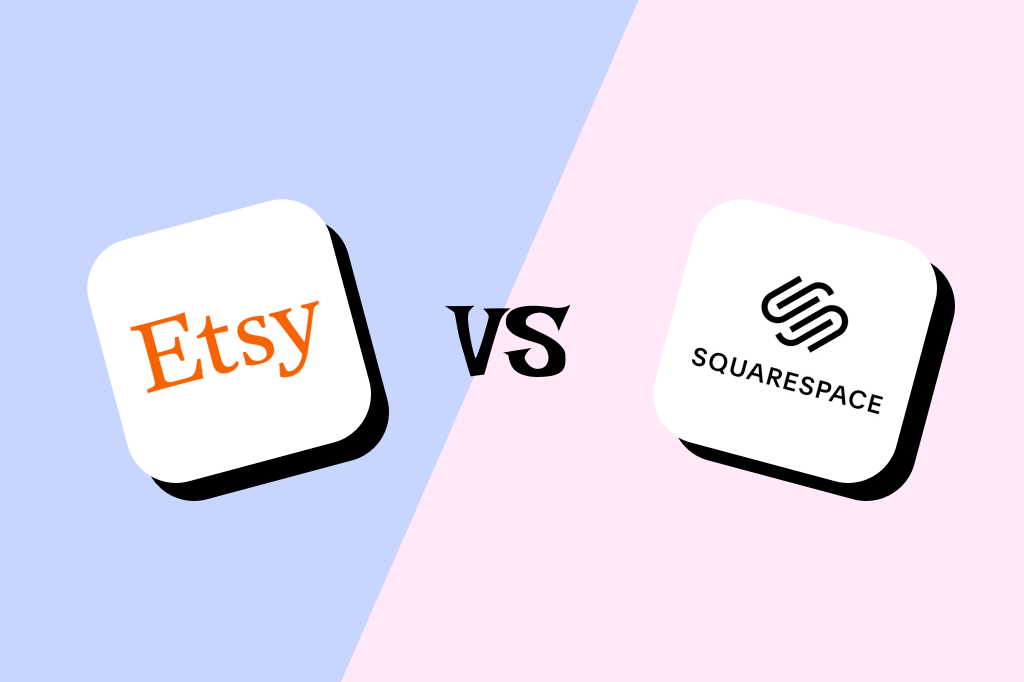
While Etsy enables you to tap into an extensive built-in audience to sell instantly, Squarespace gives you visually stunning templates to build a branded, outstanding website. If you are an artist planning to sell your handmade items, you may hesitate to choose between Etsy vs Squarespace.
No need to worry. In this blog post, we will compare Etsy vs Squarespace side by side in five crucial factors. Depending on your demand, budget, and strategy, you’ll find the right choice to launch your online store (hopefully) after reading this article.
Let’s explore!
Etsy vs Squarespace at a glimpse
If you are a newbie, let’s first get to know what Squarespace vs Etsy actually is and how different they are.
Etsy’s overview
Etsy is an American-based eCommerce company founded in 2005 by entrepreneurs Rob Kalin, Chris Maguire, and Haim Schoppik. It’s been nearly 20 years, and still, the marketplace’s core value remains unchanged– a global marketplace for handmade items.
One of Etsy’s huge advantages over other marketplaces and eCommerce solutions is its extensive built-in audience, which Etsy has steadily amassed and grown over the past 20 years.
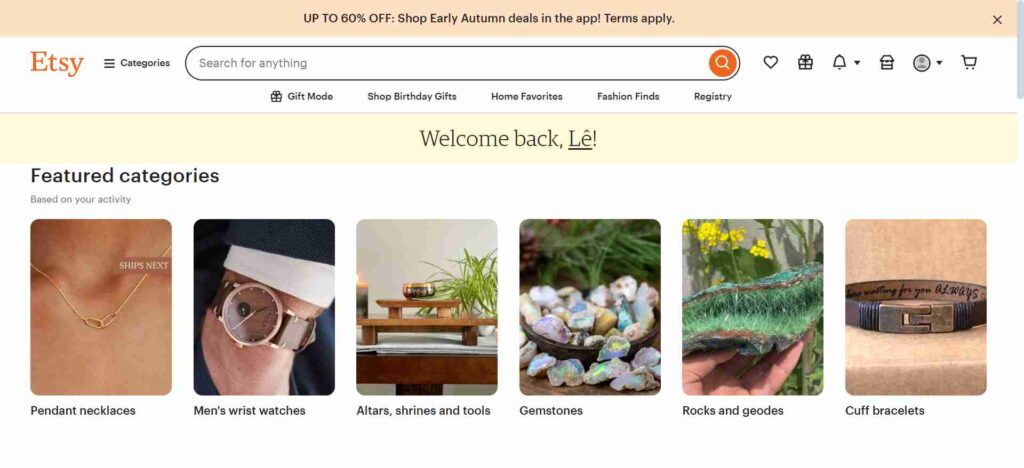
Squarespace’s overview
Squarespace was introduced to the public in the 2000s, too. However, Squarespace’s target audience and how they defined themselves are very different from Etsy’s. At its core, it is a DIY (do it yourself)/drag-and-drop website builder that makes website creation accessible to anyone.
Unlike Etsy, one of Squarespace’s key unique selling points is its absolutely stunning and professional website templates, including templates for eCommerce.
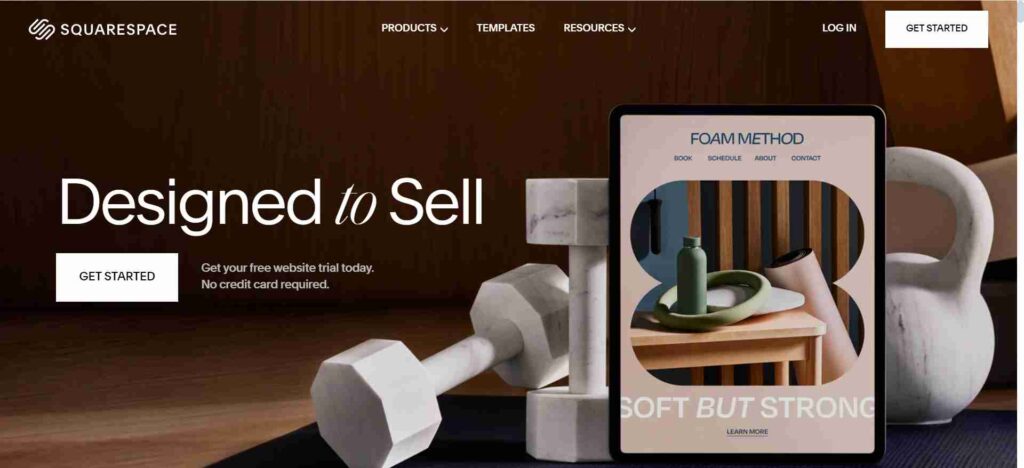
Pros and cons of selling on Etsy
Pros of selling on Etsy
-
- A huge existing customer base: Etsy has over 96.3 million active buyers worldwide. This means it’s easier to drive traffic to your listings and sell on Etsy.
- Ease of setup: Setting up and managing a shop on Etsy is much simpler than building a standalone eCommerce website like with Squarespace
- Quick product validation: Again, Etsy’s extensive number of buyers allows you to easily test new product ideas
>> Relevant reading: How to Sell on Etsy for Beginners: 12 easy steps
Cons of selling on Etsy
-
- Limited customization: Etsy offers fewer design and customization options compared to platforms like Squarespace, which can limit how you brand your shops.
- Fees: Etsy charges listing fees and a 6.5% transaction fee, which can add up, especially for sellers with high volumes or diverse product ranges.
- Competition: High competition within the Etsy marketplace can make it challenging for you to stand out.
Pros and cons of selling on Squarespace
Pros of selling on Squarespace
-
- Extensive store customization: Squarespace allows you to fully customize how your website looks and works.
- No transaction fees: Unlike Etsy, Squarespace does not charge transaction fees, which can be advantageous for high-volume sellers.
Cons of selling on Squarespace
-
- No built-in audience: Unlike Etsy, Squarespace does not give you a built-in audience. So this means you have to drive traffic and sales for your brand-new website.
- Higher initial cost: Squarespace requires you to pay a monthly subscription fee whether you make sales that month or not.
- More time-consuming: Setting and managing a Squarespace store takes more time and effort than just listing and selling on Etsy.
>> Relevant reading: 14 Etsy Alternatives to Sell Your Crafts Online
Squarespace vs Etsy’s detailed comparison
Now that you have a better grasp of Etsy vs Squarespace, to answer the question ‘Etsy or Squarespace, which one is better?’ let’s compare them head-to-head on five crucial factors.
1. Cost and fees
| Verdict: It’s a tie. If you are just getting started, Squarespace’s subscription fees (for Commerce Basic and Commerce Advanced) can cost more than Etsy’s initial costs. However, as your store scales up and grows more sales, Etsy’s 6.5% transaction fee will add up to your selling costs and fees. But this fee is rational if you want to leverage the platform’s extensive audience. |
Etsy’s cost and fees
Etsy charges you three main fees for selling crafts on their marketplace: listing fees, transaction fees, and payment processing fees.
| Fee type | Definition | How much is it? |
| Listing fees | These are the fees Etsy charges you for listing your items on their platform. | – Base: $0.20 per listing – Auto-renewal: $0.20 per listing – Multi-variant: $0.20 per listing – Private listing: $0.20 per private listing (*) |
| Transaction fees | These are the fees Etsy charges when a shopper makes a purchase on your store | 6.5% of the total amount in your listing currency |
| Payment processing fees | These fees are charged for each transaction processed with Etsy Payments. | It varies by country. For instance, the fee is 3% + $0.25 in the US. |
(*)
Auto-renewal: If you choose to automatically renew listings, you’ll be charged a fee each time an item is purchased.
Multi-variant: If your product comes in different versions (like sizes or colors), Etsy will treat each version as a separate product.
Private listing: If you list an item for sale to a specific buyer only, Etsy charges a fee for this private listing.
Squarespace’s cost and fees
Currently, the platform offers four pricing plans: Personal ($25/month), Business ($36/month), Basic Commerce ($40/month), and Advanced Commerce ($72/month).
Except for the Personal plan, the three other plans all support eCommerce functionalities:
-
- Business: This plan gets you all the features in the Personal plan, plus the ability to sell products and access advanced analytics or third-party integrations. However, Squarespace charges an extra 3% transaction fee if you choose to sell on this plan.
- Commerce Basic: You unlock advanced eCommerce features such as customer accounts, product waitlists, etc.
- Commerce Advanced: At $72/month, Squarespace offers you all Commerce Basic features, plus advanced discounts, subscriptions, and abandoned cart recovery
And just like Etsy’s payment processing fees, to accept your customers’ payment using Stripe, PayPal, or Square, expect to pay around 2.9% + $0.30 per transaction.
2. Customer base
| Verdict: Etsy wins convincingly. Since Etsy is a long-established global marketplace with a good reputation, it attracts millions of active buyers globally. Meanwhile, with Squarespace, you have to grow your own customer base from scratch. |
Etsy’s customer base
According to Statista, in 2023, Etsy had an impressive 96 million active buyers worldwide, and most of them were women aged 18-35. To serve this whopping number of customers, Etsy has a ‘squad’ of over 9 million active sellers selling all kinds of creative stuff on the marketplace.
Yes, many will argue that Etsy is saturated or too competitive. Nevertheless, from our experience, the chances that your products get seen on Etsy are still much higher than on a newly created website.
Squarespace’s customer base
We think it’s important to make something clear here: Squarespace is not an online marketplace like Etsy. Instead, it is a website builder (for all types of websites) with eCommerce functionalities if you want to launch an online store with Squarespace.
This means that, though Squarespace gives you tons of beautiful templates and control over your website to work with, the platform does not offer you an extensive audience like Etsy. Therefore, if you’re just dipping your toe into the selling world, you have to work from the ground up to drive your own traffic and acquire your own customers.
3. Ease of use
| Verdict: Etsy is much easier to use than Squarespace. Although Squarespace is known for its user-friendly dashboard, setting up an online shop on Etsy is faster and easier because you don’t have to worry about customizing your website or domain and hosting.up |
Etsy’s ease of use
If you just want a platform where you can just list your products and start selling ASAP, Etsy should be your go-to choice. Literally, all you’ve got to do is sign up for an Etsy seller account and start pushing your handmade items on the marketplace.
Etsy will guide you through every step of your store setup as you proceed, such as how you’d like to get paid, your inventory and security measurements.
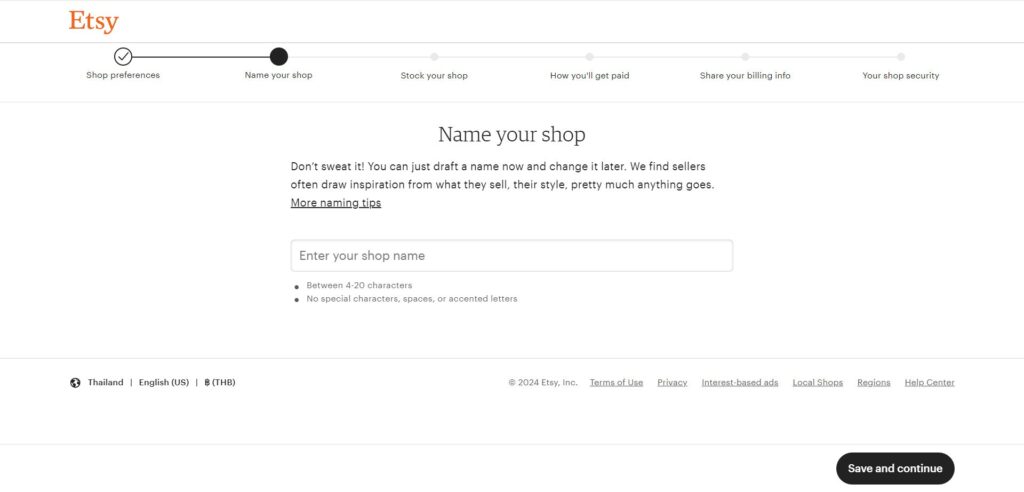
The best part is that Etsy already offers you a pre-built shop layout. Hence, you don’t have to spend hours after hours designing your website or buying and connecting a custom domain like Squarespace.
Squarespace’s ease of use
With an intuitive dashboard and no-code approach, Squarespace isn’t hard to use either. However, compared to Etsy, setting up a functional store on Squarespace still takes more time and effort.
After listing your products, you have to add your store’s important pages like Contact us, Homepage, Collection page, etc. Though Squarespace’s drag-and-drop editor allows you to customize your web pages quickly, thinking of what to put and where to put it on each page can take you days, even weeks.
4. Storefront customization
| Verdict: Squarespace offers more storefront customization than Etsy. It’s true that Etsy’s store layout is optimized with a strong focus on products. However, if you love to build an aesthetic online shop using stunning templates, Squarespace would be a more suitable option. |
Etsy’s storefront customization
Just like a typical eCommerce marketplace, Etsy gives every seller a standard store layout with a strong focus on your products instead of miscellaneous stuff.
To be more particular, an Etsy shop would mainly consist of:
-
- Banner: This is the large image at the top of your shop. You can feature a static image or multiple images at one with a carousel-style banner
- Shop icon: Your store’s logo
- Announcement: This is where you can feature all the important information about your store, like your current deals or social media accounts.
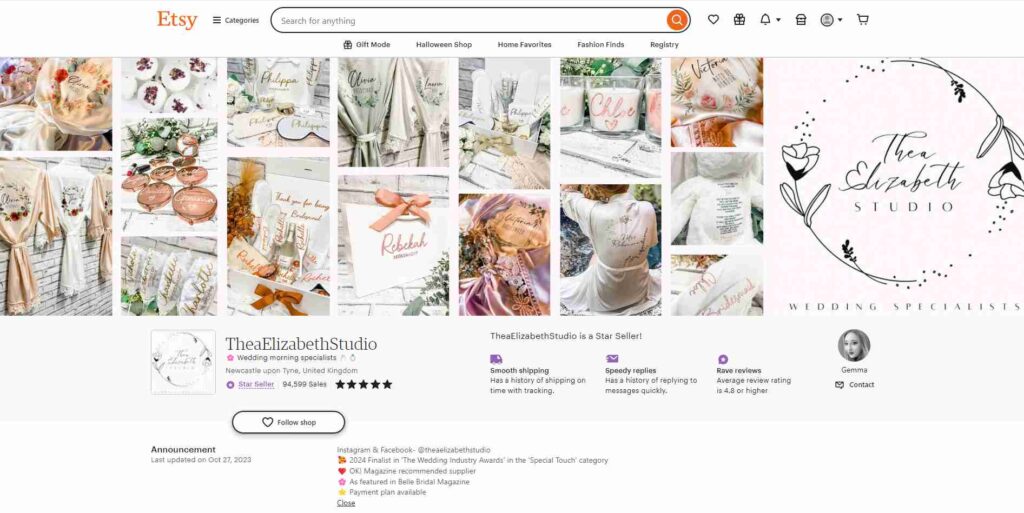
Squarespace’s storefront customization
Unlike Etsy, Squarespace has over 170 themes for you to choose from, with over 40 of them being for eCommerce purposes. This means you have much more selection than Etsy’s standardized layout.
Not to mention that since Squarespace is a website builder at its core, you can extend your website’s functionalities with code or third-party app integrations.

5. eCommerce features
| Verdict: It’s really a tie. Both Squarespace vs Etsy give you diverse eCommerce features to sell and promote your online store efficiently. |
Etsy’s eCommerce features
Etsy provides several sales features to help you sell your products and manage your orders and inventory effectively. Here are the notable sales features Etsy offers:
-
- Various payment options: With Etsy Payments, you can accept your customers’ payments in multiple ways, from credit/debit cards to digital wallets like Apple Pay and Google Pay to BNPL (Buy now, Pay Later) option with Klarna.
- Etsy ads: With Etsy, you can easily run ads on the marketplace to increase your product visibility on Etsy search results. The platform also supports off-site ads like search results or social media apps like Facebook.
- Coupons: You can offer your customers discounts and coupons to improve your conversion and retention rate
- Social media: Etsy’s social media tool enables you to share flash sales, important updates, or anything in your shop on social platforms like Facebook, Instagram, Pinterest, and Twitter.
- Subsidized shipping labels: Etsy offers sellers subsidized postage labels, which are more affordable than shipping directly with many carriers like USPS, FedEx, and Canada Post.
- POS support: Little do you know that Etsy indeed supports integration with Square for sellers who also do in-person selling
Squarespace’s eCommerce features
Similarly, Squarespace gives you several eCommerce features to sell and promote your store effectively. To name a few:
-
- Flexible product offerings: With Squarespace, you can sell various types of products, from physical ones like Etsy to digital or even gated content(**).
- SEO and marketing features: Squarespace offers various built-in SEO tools and marketing tools to promote your store, like email campaigns (with Mailchimp integration), social media integration, abandoned cart recovery, etc.
- Diverse payment options: Like Etsy, Squarespace also lets you accept payments with major credit and debit cards. You can also integrate with Afterpay to offer your customers a BNPL option.
- Social commerce selling: You can easily sync your Squarespace products with social commerce platforms like Facebook Shops and Instagram Shopping to expand your sales channels.
- Advanced shipping options: Squarespace offers real-time shipping rates, label printing, and integration with major carriers to streamline your shipping process.
- Complex discount rules: Squarespace lets you set advanced discount conditions such as 10% off selected products or a $10 coupon for orders that meet a $100 threshold.
(**) Squarespace will charge you a 9% transaction fee to sell gated content instead of physical items.
Who should sell on Etsy and Squarespace?
Here comes a million-dollar question: who should sell on Squarespace vs Etsy? Well, it all boils down to one’s product focus and goal. Let’s wrap things up!
Who should sell on Etsy?
Launch an Etsy shop if you:
-
- Prefer a platform where you can focus on selling your art instead of designing your web
- Create or design your own crafts and wish to sell them to an engaging community
- Want to leverage Etsy’s huge existing customer base to validate your products, drive sales fast, etc
Who should sell on Squarespace?
Set up a Squarespace store if you:
-
- Have a strong branding or customer base already
- Want to launch a hobby site with eCommerce functionalities
- Want to sell mass-produced products instead of selling crafts
Final thoughts
Like any other platform, Etsy vs Squarespace both have their strengths and weaknesses. Etsy excels on the note that it gives you a vast community focused on handmade products that you can instantly sell to. Meanwhile, Squarespace offers you greater customization and control over your website’s functionality and branding aspects.
Whether which option you choose, the Masstic team hopes you’ll find a platform that better aligns with your goals since it can lay the groundwork for your store’s scalability and success.
Frequently asked questions
Is Etsy better than Squarespace?
Yes, Etsy is better than Squarespace if you want a well-reputed marketplace with a massive, engaging buyer community to list and sell your handmade products.
What is the difference between Etsy and Squarespace?
We think the main difference between Etsy vs Squarespace is that Etsy is an eCommerce marketplace while Squarespace is a website builder platform that supports eCommerce functionalities.
Is it better to sell on Etsy or create a website?
To be honest, we believe it’s much better to sell on Etsy than a website. Though you are charged the transaction fee, with over 90 million active Etsy buyers, you have a better shot to earn your first sales or test your products/niches.
Therefore, if you are just getting started, we highly suggest launching a store on Etsy first and then building a website with Squarespace or any website builder platform you prefer to establish your brand identity.
Is it worth it to sell on Squarespace?
It depends. If you already have a customer base from, let’s say, your physical store or another channel, it’s worth selling on Squarespace. This is because the platform is easy to work around and does not charge you a transaction fee.

